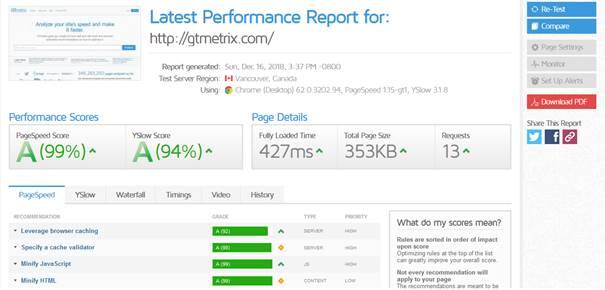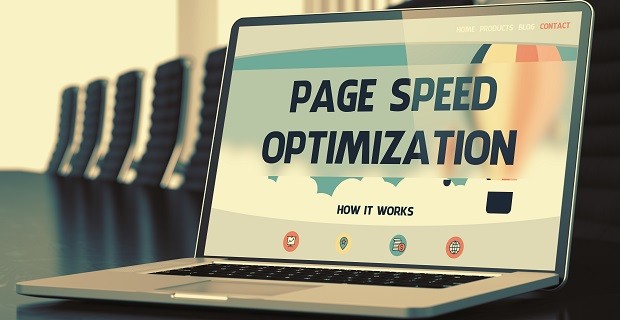For several years now, web developers and SEO experts alike have been insisting on the importance of website speed. This is not just empty talk. Numerous tests show faster websites get better results.
And now, with Google cracking down on suboptimal websites, fast load times are more important than ever. However, most websites are still slower than they should be.
Based on the data curated by HostingTribunal.com on the importance of speed for websites (published below), average website loading time on desktops is 9.2 seconds and on mobile devices is 22 seconds.
Sounds a bit slow, right?
Just so, as the accepted average loading speed by customers is around 3 seconds.
The good news is there’s no cause for alarm. Most speed issues are serviceable. If you’re worried about huge load times, we have prepared a list of things to do to optimize your site.
Here they are:
- Test website speed
- Compress images
- Use GZIP
- Leverage server caching
- Consider a new hosting provider
Test Your Website Speed
You can’t fix the problem if you don’t know it’s there, so let’s start with testing speed. Now, you might be asking, won’t I be able to tell if my website is slow?
To be fair, you might. But, more likely than not, you wouldn’t do it precisely. That’s not an assumption against you, personally; most people are just naturally biased towards their own sites. Tests show that most site owners unintentionally disregard long load times.
Internet users, however, subjectively experience load times as longer than they are. You and your visitors probably don’t agree on what slow is. The bad news is that, ultimately, users decide which websites succeed.
Luckily, there are various tools to help with speeding up a website. One option is GTMetrix. It not only tests overall load times but also finds areas that need optimization and suggests fixes.

This tool allows you to test site speed from different locations and different browsers, along with numerous other options.
Also, as you can see from the image, apart from the main speed metric, it displays dozens of factors that contribute to speed. You can just find the areas where a website performs poorly and address the issues.
GTMetrix positions the most critical categories towards the top of the list. Just click on the category in the list to see a suggestion how to improve it.
Compress Images
Now that you know what is slowing down your site, you can fix the problem. We will discuss several common ways to speed up a site.
There are a lot of categories to consider, but images usually are the top priority. They are typically the largest web page element. It goes without saying that the total page size increases load times.
It can be especially tempting to take images in the highest possible resolution and post them as they are. Your connection is probably fast enough to upload an 8Mb image in a matter of seconds.
The problem starts when the visitors need to download that page and one image takes up 80% of the page size. It’s even worse if there are multiple images on one page. Simple math is enough to figure out large images can easily double or triple load times.
So you should reduce image size as much as possible without compromising their quality. Cropping the images manually is possible but is rather slow and, online, speed is your friend no matter what.
A tool like Compressor.io is a good option for image compression. Just upload the images and the tool takes care of the rest. Then upload the compressed images to your site.
If you’re familiar with WordPress, you probably expect to find a plugin that does all this. And rightly so. Plugins like WP Smush or EWWW Image Optimizer compress all images automatically on upload. Just set the image parameters and the plugin takes it from there.
Use GZIP
GZIP has the same idea as image compression—the less data you have to send to the user, the faster the page loads. GZIP compresses the overall size of the code sent to the user.
Enabling GZIP is a pretty much standard practice among web developers, and it can reduce load times by 70%. The owners of custom-coded websites can insert it manually into the .htaccess file of their website. If you’re not a professional, check with your hosting provider’s support team to find out the best way to do this. If your provider has quality customer support, they will probably be happy to do this for you.
WordPress users can find a plugin that enables GZIP compression.
Leverage Server Caching
Server caching gets more useful the more visitors you have. Typically, servers don’t store each page separately in their memory. Instead, they generate an HTML file every time someone wants to see the page.
This is not a problem if your page gets 10 or 50 visitors. But if you get 50,000 visitors to your website, the server has to generate 50,000 HTML documents even if everybody visits the same page.
This is an obvious waste of resources and server caching solves the problem. Static content of a page—the content that only the website administrator can change—is stored as an HTML file when the page gets the first visitor.
That way, the server has a file prepared for every following visitor and only has to generate the dynamic content—comments, widgets, and other elements that can change at any time. The server wastes no resources on repeatedly generating the same content.
Again, numerous WordPress plugins like W3 Total Cache and WP Rocket enable server-side caching. And again, for custom-coded websites, you can ask your provider’s technical support for the recommended caching option.
Consider Changing Hosting Providers
Many slow websites lack in speed because of the hosting they use. Many website owners purchase web hosting based on a few experts reviews, an aggregate of user reviews or, in the worst cases, fall prey to hosting companies’ catchy advertisements. At the end, they work with a host that takes forever to load websites.
Tools like GTMetrix clock in the time-to-first-byte (TTFB), which is a useful measurement that reveals server performance. Essentially, it is the time it takes for a web server to respond to the first incoming HTTP request. Technical jargon aside, the lower it is, the better.
If you think your hosting server response is slow, it may be time to change hosts or upgrade to a better package with more resources. If you want to skip the tedious task of testing the hosting providers for loading speeds and choose the host with best loading speed, Bluehost is a rather solid choice.
Nick, the chief website hosting analyzer at the Hosting Tribunal tests extensively and regularly web host providers; Bluehost ranks consistently as one of the best hosts for loading speeds and reliability.
Conclusion
The options for optimizing website speed are nearly endless. If you’re just starting out, your best bet is to use GTMetrix to test your website and follow its recommendations.
You can move on from there and try more complex solutions as you learn more about how website speed works. And to start you out on learning about website speed, we have a useful infographic below. It lists all the key facts you should know.
Good luck and have fun making your website faster.














